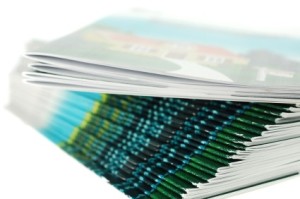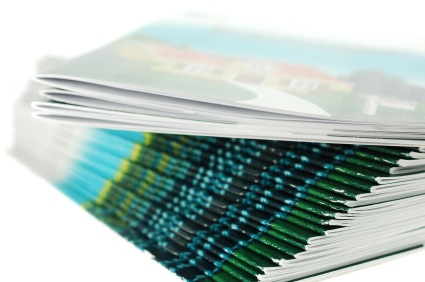Determining What Collateral Material is Best For Your Organization
When it comes to promoting your company or organization, it’s important to consider what types of collateral material are best suited to your purposes. While there are some promotional items every professional should have, there are also highly specialized forms of marketing material.
 Here, Tripepi Smith outlines the pros and cons of various forms of collateral material so that you can better consider how to spend your marketing budget.
Here, Tripepi Smith outlines the pros and cons of various forms of collateral material so that you can better consider how to spend your marketing budget.
Everyone should have:
Business cards. This is usually the first bit of collateral invested in. In its most basic form, the business card should have your organization’s logo, your name, and your contact information. But don’t overlook what else a business card can do. For a marginal increase in cost you can use the back of your card to give a one-line pitch about your company. Doctors often use the space for appointment reminders. If you have a mailing list (and you really should) you can add a simple Quick Read Code (QRC) to the back of your card that allows people to immediately add themselves to your list. Or you can use the QRC to link to your online portfolio. The possibilities are endless.
Letterhead and envelopes. More and more, communications happen online, but when you have the chance to send an official letter, make sure it is on professionally designed letterhead, in an envelope branded with your logo. Craft a separate first page and secondary page template with the first page containing more information. Just be leary of printing information that may change as stationary runs tend to be more costly than business cards. If you might change addresses soon, stick with just a URL. Or, if you might be moving locations, go with a PO Box to disconnect your work address from your mailing address. Finally, if you are incurring the cost of printing, do not skimp on paper quality. The feel of paper will have an impact on your reader and the marginal cost pales in comparison to the lost opportunity.
Report/RFP covers. The types of reports you compile will vary depending on your business. Perhaps you have investors you need to update, or members that need to be alerted to changes in the organization. Or maybe you are bidding on a new water pipeline project for a municipal water district. Whatever the content, make sure your report or RFP response is unmistakably yours by designing a cover page that effectively conveys your branding and interior page templates that include your logo on every page. You can add these design elements into a Word Template and print in color to get the full branding benefit.
Marketing slicks. These standard page (8.5×11), double-sided documents are very common because they are digestible and inexpensive to reproduce. Like all your materials, they should have a color scheme, logo and fonts that closely resemble your other collateral and website. The great thing about the marketing slick format is that it is easy to reproduce in small runs, so you can frequently update the content as the solutions, business or audience change and reprint and avoid throwing out large piles of old material. Plus, they look great in both digital and printed format, whereas a tri-fold, for example, makes sense when printed but makes little sense when rendered digitally as a PDF and linked to on a website.
Ideas for local governments and service organizations:
Forms. Forms should be kept as simple as possible, with your organization’s logo in the header. If creating electronic forms, such as PDF’s, try to use form fields if you have access to a PDF editor to encourage people to fill the forms out with a computer before printing. This improve readability and accuracy and will be easier for your residents/customers. Also, clearly and consistently identify all forms with a form number and form version date and locate that information in the same spot on all forms so staff always know how to identify a particular form and its version, no matter what department they are from.
Flyers. Flyers are great for promoting events, classes, and services. A well-designed flyer will use your organization’s branding and engaging images to create an eye-catching design. Text should be kept to a minimum, and there should be very clear contact information for further details. Also keep printed material size in mind. Sometimes smaller is more effective because people can easily pocket the flyer if it is small enough.
Ideas for membership-driven organizations:
Brochures. The beauty of a brochure is that it can be easily slipped into a pocket and read later. Unlike a flyer, which is meant simply to catch the eye, brochures generally have more detailed information, and sometimes even a portion that can be filled out and returned. That said, be sure your flyer balances design with content so that it isn’t too dense with text.
Trade show exhibits. Trade shows are an excellent opportunity to place your marketing material in front of a target audience. A large banner or booth will draw attention, but resist the temptation to fill the space on the large canvas with words. Instead, use a few key phrases to draw people in or reaffirm your brand identity. Let your people do the talking, not your signage.
Ideas for retail outlets:
Point-of-purchase displays. These specially designed marketing materials are generally functional, holding up a product, or advertising something immediately for sale. They should grab attention and have specific calls to action aimed at converting a shopper into a buyer.
Catalogues, menus and product lists. Unlike point-of-purchase displays, these materials must represent your products without actually having them at hand. Word choice and image selection are key.
Whatever your goal in developing your collateral material, the important thing is to understand it as an investment in your organization. A few dollars spent on professional design work will make a world of difference in how your organization is perceived. Plus, taking a holistic approach that covers your printed and online material will create a professional and uniform look across your client and prospect touch-points.


